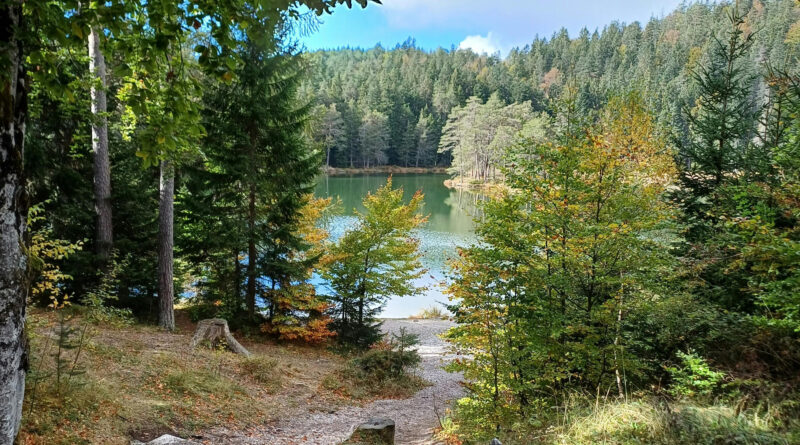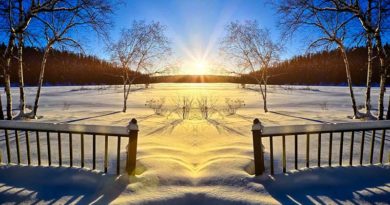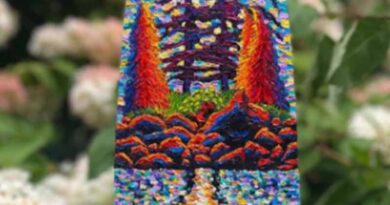The Best Way to Access Your Lake
Walking across different areas of your property to get to the lake can trample vegetation, expose soil and increase erosion as well as runoff. The solution, depending on the slope of your shoreline property, is to install a pathway or a set of stairs.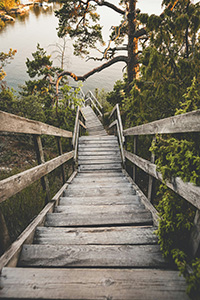
If your slope is gentle or moderate, a pathway is often the best option. However, not all pathways are created equal! While it might seem a pathway that runs in a straight line from the cottage to the water is a good idea – it typically isn’t! This allows precipitation and all the contaminants it’s carrying (known as runoff) to go straight into the water. Instead, your pathway should meander, following gentle S-curve switchbacks. This will allow runoff to be captured by the surrounding vegetation where pollutants can be filtered, soil stabilized and flooding reduced.
It’s also important to cover your path with an appropriate material – which also depends on your slope. If you have a gentle slope you can use pine needles and leaves, wood chips and crushed gravel, or erosion control mix (mulch made of partially composted bark, sand, gravel, stone and wood fragments). If you have a moderate slope, it’s best to use wood chips and crushed gravel or erosion control mix.
If the slope to the lake is steep, stairs are the better option. But again, some stairs are better than others! Stairs that are raised off the ground, have tread boards that are spaced about 2.5 cm apart and have open backs (no risers) are your best bet! This will let sunlight and rain reach the vegetation below, vegetation that will capture some of the runoff helping reduce the amount of water and contaminants that reach the lake and helping to protect against erosion. Landing areas can also be added – a spot to take a little rest and enjoy the view!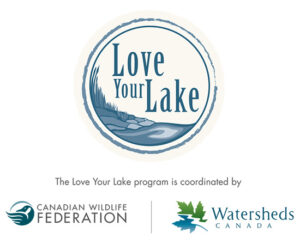
For more information on how you can show your lake some love, visit LoveYourLake.ca. Love Your Lake is a shoreline assessment program developed by the Canadian Wildlife Federation and Watersheds Canada.
Written by Terri-Lee Reid, Freshwater Researcher with the Canadian Wildlife Federation

